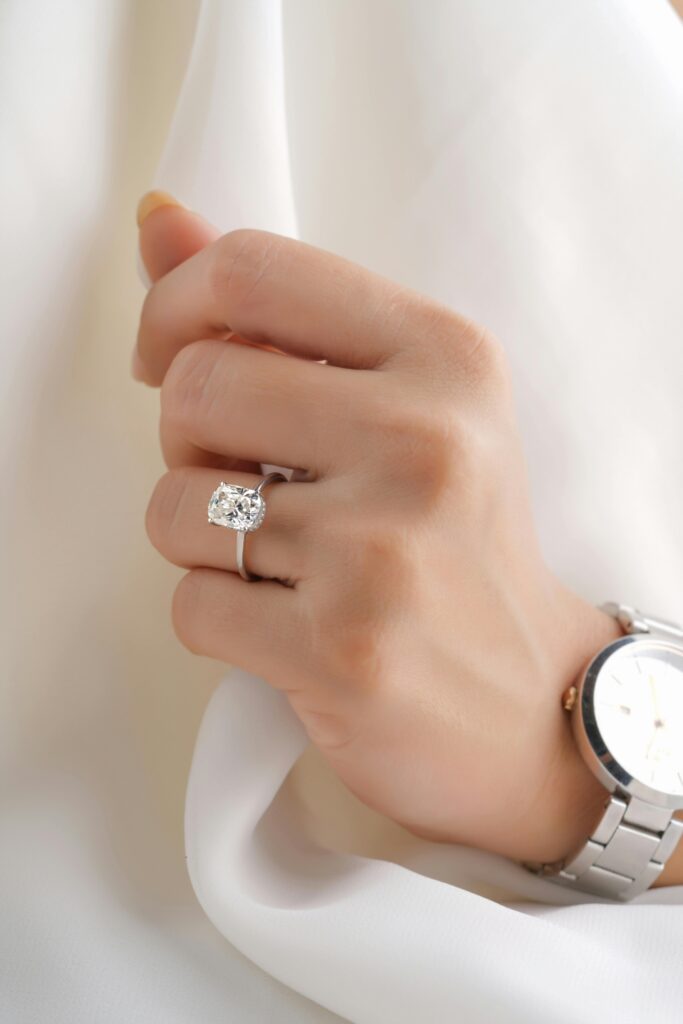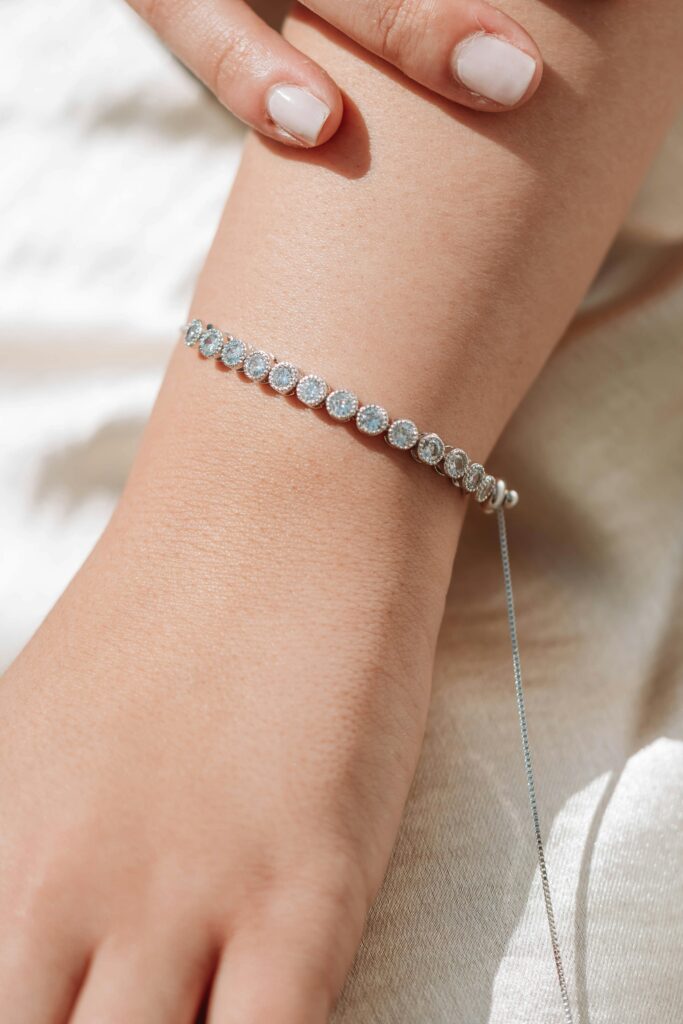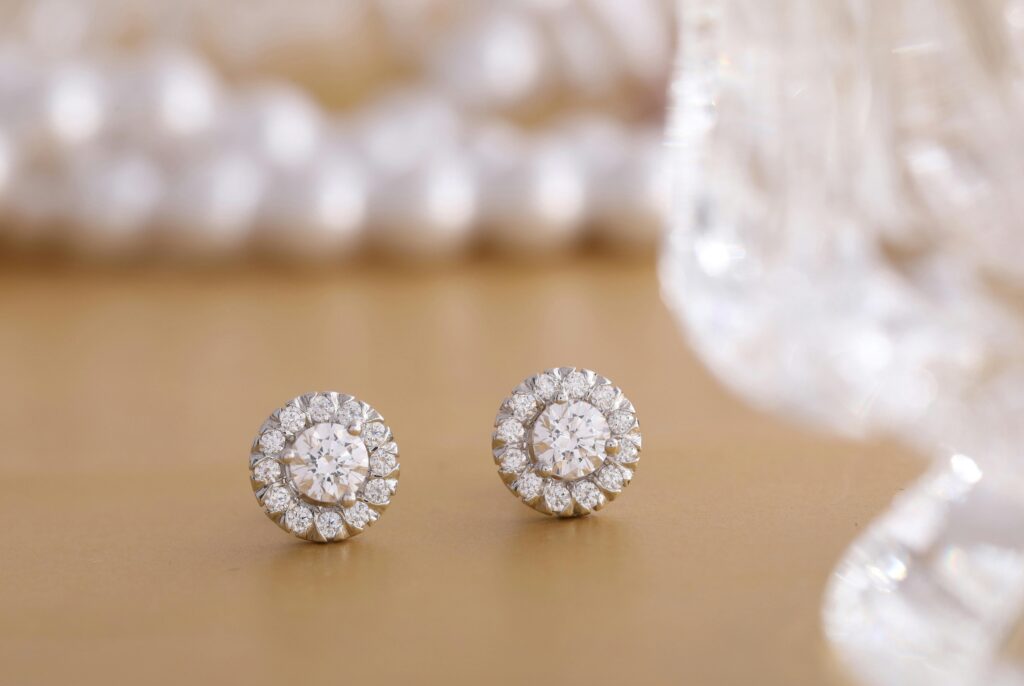Having grown in popularity in recent years, lab-grown diamonds have generated some confusion – and a fair few misconceptions.
A prevalent misconception about lab-grown diamonds is that they’re inferior to natural diamonds. The truth is in fact that they are almost identical when it comes to their chemical composition and structure. The only difference is in their origin.
In recent years, lab-grown diamonds have become increasingly popular among those looking for a cost-effective jewellery option and bigger carat weights. They’re also used as replicas of the owner’s higher value, ‘natural’ diamond jewellery that can be worn abroad while the original stays safe at home.
But many people are unsure about whether lab-grown gems are treated the same as natural diamonds by insurers. This is especially true for anyone looking to buy an engagement ring, whom may be concerned that engagement ring insurance may not apply to a lab-grown diamond.
In this article, we’ll discuss what you need to know about insuring your lab-grown diamond jewellery and how it works.
Can you insure lab-grown diamonds?
Yes, you can insure lab-grown diamonds. The insurance process and coverage is the same as if you were insuring natural diamonds. The only significant difference is that your premiums will potentially be lower, as lab-grown diamonds cost less to replace.
Why should I insure my lab-grown diamond?
Whether you own lab-grown or natural diamonds, both are significant financial investments that should be protected against loss, damage and theft. Here are just some of the reasons why you should get jewellery insurance for your lab grown diamonds:
● Financial protection: Covers your diamond jewellery against damage, loss and theft.
● Sentimental value: Diamond jewellery can often have sentimental value, especially when it comes to engagement and wedding rings. Insurance helps to protect this emotional connection by covering you for repairing or replacing them, where necessary.
● Replacement cost cover: Jewellery insurance covers the full cost of replacing your damaged or lost diamond.
● Peace of mind: Even though lab-grown diamonds cost less than natural diamonds, insurance for these gems provides peace of mind that your investment is protected.
Do you need to get regular appraisals with a lab diamond?
Regular appraisals are essential for any type of high-value jewellery, including lab-grown diamonds. Appraisals and valuations ensure that you have an up-to-date valuation of your jewellery that reflects market demand. This is important in making sure that you have the right insurance coverage.
The process of appraising a lab-grown diamond is much the same as a natural diamond. Lab grown diamonds by law need to have an inscription indicating that they were created in a laboratory. During an appraisal, the jeweller will inspect this inscription, alongside other features, to confirm the diamond’s value and origin. Often, the diamonds are laser inscribed with a serial number on the girdle. This can only be seen with a microscope but most lab-grown stones will start with an ‘LGXXX’ followed by the number to identify it as lab-grown.
If the stone has a certificate (most diamonds of 0.50ct or above will have a certificate), the certificate must state that it is lab-grown. If the grading lab is GIA or IGI, you should be able to type the serial number into their portal to check if it is registered and that the certificate is real. It will also online confirm if it is lab-grown. A natural stone will not always be described and listed as ‘natural’ but a lab-grown gem legally must be to differentiate it
This is why in-person appraisals are essential, as it’s the only true way to identify if a diamond is lab-grown and to determine its value. It can also help you determine whether you may have been sold lab-grown diamond jewellery after believing it to be natural.
Things to consider when you insure your lab-grown diamond
When choosing insurance for your lab-grown diamond jewellery, there are some important things to consider:
● Replacement: Insurance should cover a like-for-like replacement.
● Valuations: Get an up-to-date valuation from a professional jewellery appraiser.
● Documentation or certification: Keep your certificates and documentation safe so that your lab grown diamonds are insured for the correct value.
● Annual policy review: Review your policy at least once a year to make sure that it’s still providing the right coverage for your needs.
● Travelling: If you travel frequently, ensure that your high-value jewellery is protected on holiday.
It’s important to do your research so that you choose the right insurance for your needs. Look for a provider with an efficient and transparent claims process so that you have peace of mind that, should anything happen, making a claim is easy and stress-free.
Choosing your jewellery insurance partner
So, can you insure a lab-grown diamond? Yes, you can – and it’s also highly recommended. Insuring your lab diamond jewellery offers the same benefits as insuring any type of jewellery, including natural diamonds. If your jewellery is lost, stolen or damaged, you will have peace of mind that you are protected and can get a replacement. While it’s impossible to replace the emotional connection you have with certain items, insurance can at the very least help ensure you get a like-for-like replacement.
One of the most important steps in insuring your jewellery is choosing the right insurance partner. At Stanhope, we provide tailored high-value jewellery insurance alongside a highly personalised service. We pride ourselves on our integrity and always putting our clients first, ensuring that you get the protection you need alongside an unparalleled bespoke service. Find out more about our high-value engagement ring and jewellery insurance or get a quote.
Luxury protection, just clicks away
Lab-grown diamond frequently asked questions
What is a lab-grown diamond?
Why are lab-grown diamonds increasing in popularity?
Can you tell the difference between a lab-grown and a natural diamond?
Is a lab-grown diamond a good investment?
Do lab-grown diamonds look the same as natural diamonds?
Lab-grown diamonds have the same chemical composition and structural form as natural diamonds. The only difference is in how they are made, and this will be evident in their internal growth patterns and crystal markings. They will also react differently under gem testing equipment as a result of the flux solution (a chemical cleaning agent) and the process of manufacturing.
How are lab-grown diamonds made?
There are two different ways to grow diamonds. The first method, chemical vapour deposition (CVD), can produce a small diamond in as little as two weeks. High Pressure, High Temperature (HPHT) diamonds are more common, with a larger diamond able to be created in up to three months.
Both processes cost around the same, but are different methods with different rates of success. The more common HPHT diamond formation process begins with a small diamond seed crystal that is placed into a growth chamber. The diamond seed is exposed to intense pressure of around 870,000 pounds per square inch and intense heat of around 1300-1600 degrees Celsius.

Within the capsule, a carbon starting material, such as graphite, dissolves in a molten flux consisting of metals such as iron (Fe), nickel (Ni) or cobalt (Co), which lowers the temperature and pressure needed for diamond growth. In this environment, a diamond begins to form around the seed.

Are lab-grown diamonds rare?
Lab-grown diamonds are not rare, as they are man-made and can be created and reproduced fairly quickly. They are also not new; for decades, they have been used for industrial purposes but until recently the technology wasn’t available to grow gem-grade quality diamonds for jewellery.
Most lab-grown diamonds are made in Asia, predominantly China and India. They have produced a large yield in such a short time frame that they have proliferated the market, resulting in a rapid decrease in prices. We are also noticing that the gap between a 1 ct and a 2ct is closing. We are seeing significantly lower prices for the same size stones we bought for jewellery a year ago. Lab-grown stones do not hold their value and we need to make customers aware of this at the time of purchase.
Why are lab-grown diamonds increasing in popularity?
We sell both natural and lab-grown stones and are happy to advise our clients on both to create their perfect piece of jewellery.
Though we cannot speak for the whole industry, our experience has shown us that lab-grown diamonds are seeing an increased demand for three primary reasons:
- Younger generations are prioritising getting on the property ladder, and want to buy a larger and higher quality diamond as an engagement ring for a more affordable and attainable price.
- Some people are becoming more concerned about the ethical side of the industry, the sustainability and environmental impact and want an alternative to diamonds that align more with their own values.
- Crime is another reason many of our clients opt for lab-grown. After being broken into and having had jewellery stolen, some of our clients have decided to replace their jewellery with lab-grown stones, whilst others are wanting replicas of their higher-end pieces or heirloom jewellery so they can take them abroad on holiday without fear of losing them.

Are diamonds generally a good investment?
In our opinion, diamonds are not really investment products. Loose lab-grown diamonds are definitely not investment products. Even natural diamonds do not increase in value over time very much, and this year actually have decreased slightly. It is more likely to be the gold in the jewellery that increases in value. Like any commodity, fluctuations in the market due to economical and political factors can result in increases and decreases in value. But we recommend liaising with a financial advisor on this subject as our expertise lies in jewellery manufacturing and not financial investment portfolios.
It can be argued though that depending on an item’s provenance and who designed it, a couture piece of high jewellery might increase in value and be seen as an investment, but this is very subjective. We believe you should purchase jewellery because you love it, love the craftsmanship, and want to enjoy wearing it.
Luxury cover for lab-grown and natural diamonds
Get an instant quote
Excellent service, and first class in there approach, certainly worth recommend Stanhope.
5 Star Review ReviewsIO
Sources
https://www.theguardian.com/lifeandstyle/2020/mar/10/diamonds-lab-grown-climate-change
https://news.thediamondstore.co.uk/what-are-lab-created-diamonds/
https://www.nathanalanjewelers.com/lab-diamonds-vs-natural-diamonds
https://welcome.vdbapp.com/index.php/business-strategies/261-can-lab grown-diamonds-be-appraised
https://www.labgrown.diamonds/guides/diamond-guides/should-i-insure-my-lab-diamond
https://www.growndiamondcorp.com/blog/are-lab grown-diamonds-a-good-investment/https://www.vogue.co.uk/article/pandora-lab grown-diamonds
https://www.queensmith.co.uk/diamond-guides/lab-grown-diamonds/lab-grown-diamonds-price-and-value

